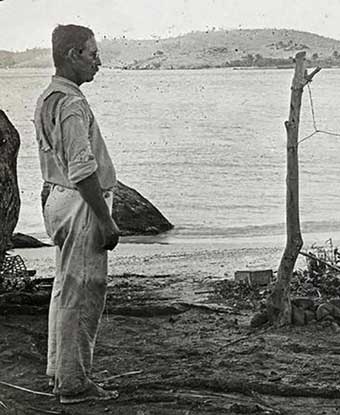Last updated: May 25, 2021
Person
Gudmund Hatt

National Museum of Denmark
Gudmund Hatt was an archeologist and cultural geographer. In 1905, Hatt went to the United States to live among the Cherokee in Oklahoma, which led him to study ethnography at Harvard University from 1906-1907. He returned to Denmark to teach Native American Ethnology. From 1919 to 1929, Hatt was an inspector at the Danish National Museum's Ethnography Department in Copenhagen. He participated in archeological research in Jutland. From 1923, Hatt was a lecturer in cultural geography at the University of Copenhagen, becoming a full professor in 1929. In addition to memberships in European professional organizations for anthropologists, Hatt was a member of the American Ethnological Society and the American Anthropological Society.
From 1922 through 1923, working through the Danish National Museum, Hatt led an archeological survey of the Virgin Islands (including areas that are now national parks) and Santo Domingo in the Caribbean. While Hatt visited several sites on both St. Thomas and St. John, he spent most of his time on St. Croix. Hatt conducted excavations at 14 sites on the island. He was one of the first archeologists to comment on the distribution of Amerindian sites across St. Croix and note the significance of their location regarding the local environment and the types of soil present.
Island residents directed Hatt to Salt River, where he conducted extensive excavations at Salt River Point, today known as the Columbus Landing Site. Hatt surveyed six blocks to be excavated, lettered A, B, C, E, F and G. Near the southwestern corner of Block A, he found a row of nine large stone slabs -- the first batey (ball court) discovered in the Virgin Islands. The row measured roughly 8 m long and 0.5 m high. Four slabs were carved in styles found throughout the Greater Antilles, resembling petroglyphs from lowland Amazonia, Surinam, the Guianas and the Orinoco basin. The carvings included the “wrapped ancestor,” the “Frog Woman” (the cemi Attabeira), and several human faces. Based largely on work at Salt River, Hatt established the first prehistoric chronology for St. Croix and the Virgin Islands. Hatt's chronology has largely remained intact. All of the artifacts, including the ballcourt stones, were taken to Denmark.
